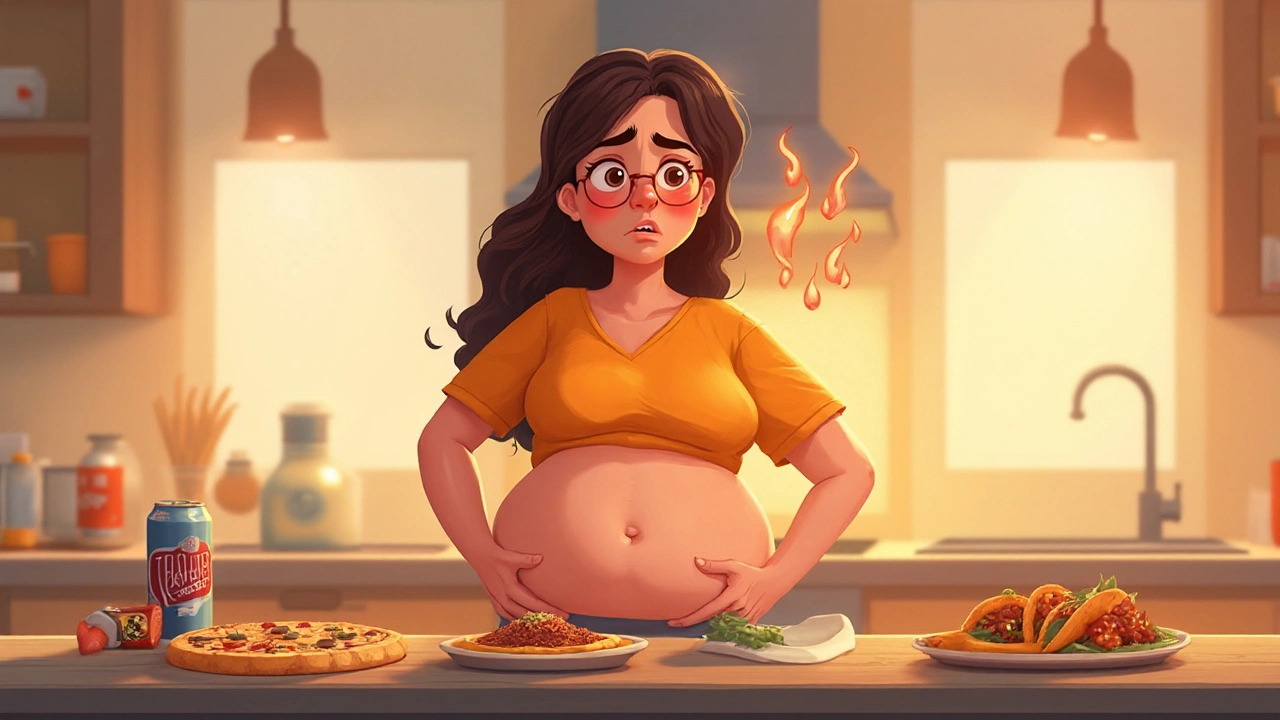Gastric Pressure: What It Is and How to Reduce It
Ever feel like your stomach is a balloon about to pop? That tight, uncomfortable feeling is often called gastric pressure. It’s the result of gas, fluid, or food pushing against the walls of your stomach. While a little pressure is normal after a meal, too much can cause bloating, pain, and even acid reflux.
Understanding why gastric pressure builds up is the first step to fixing it. Factors range from what you eat to how you move, and even stress can play a part. The good news? Most of the triggers are things you can control, and relief is usually just a few habit changes away.
Common Triggers of High Gastric Pressure
1. Gas‑forming foods: Beans, broccoli, cabbage, and carbonated drinks release a lot of gas during digestion. If you notice pressure after a specific dish, try swapping it out for a low‑fermentable alternative.
2. Eating too fast: Swallowing air while you rush through a meal adds extra pressure. Chew each bite thoroughly and put your fork down between bites to give your stomach time to process.
3. Fatty or fried foods: Heavy meals delay stomach emptying, leaving food sitting longer and creating a feeling of fullness and pressure.
4. Stress and anxiety: When you’re stressed, your gut muscles can tighten, making it harder for gas to move out. Simple breathing exercises can relax those muscles and cut the pressure.
5. Lactose intolerance: If you’re sensitive to dairy, the lactose can ferment in your gut, producing gas quickly. Switching to lactose‑free milk or a plant‑based option often clears things up.
Practical Tips to Lower Gastric Pressure
Adjust your diet: Keep a food diary for a week. Note any meals that leave you feeling bloated and try cutting those items out. Many people find relief by reducing beans, onions, and carbonated drinks.
Eat smaller, frequent meals: Large portions stretch the stomach and trap gas. Aim for five to six smaller meals throughout the day instead of three big ones.
Stay hydrated, but wisely: Water helps digestion, but gulping down a soda or a large glass of juice with meals can add unnecessary gas. Sip water between bites instead.
Move after eating: A short walk (10‑15 minutes) stimulates gut motility and helps release trapped gas. Even standing up and stretching can make a difference.
Try over‑the‑counter aids: Simethicone tablets break down gas bubbles, providing quick relief. If you suspect acid reflux, antacids or H2 blockers may reduce the pressure caused by stomach acid backing up.
Mind your posture: Slouching compresses the abdomen, making it harder for gas to escape. Sit upright while you eat and avoid lying down right after a meal.
If gastric pressure persists despite these changes, it could signal an underlying condition like gastritis, IBS, or a food intolerance. In those cases, a quick chat with your doctor or a dietitian can pinpoint the cause and guide you to targeted treatment.
Bottom line: gastric pressure is often a sign that your stomach’s working overtime. By tweaking what you eat, slowing down, and staying active, you can keep that balloon‑like feeling at bay and enjoy meals without the uncomfortable after‑effects.

Abdominal Distension and GERD: How They’re Connected & What to Do
Sep, 23 2025Explore why a bloated belly often goes hand‑in‑hand with heartburn, how the two conditions influence each other, and practical steps to find relief.
READ MORE